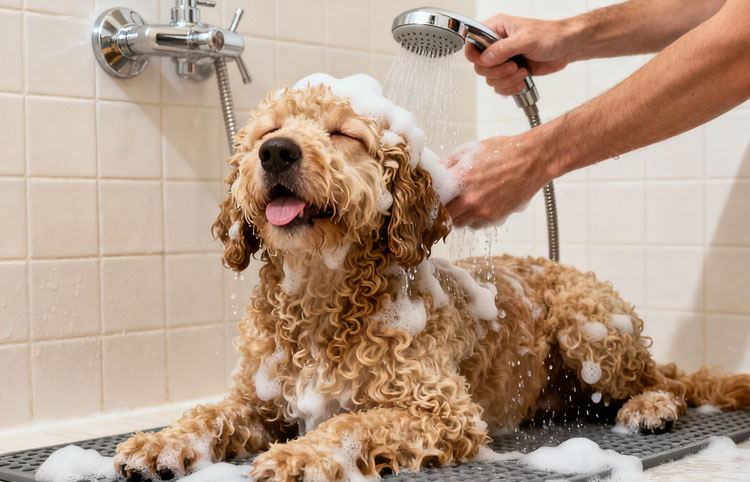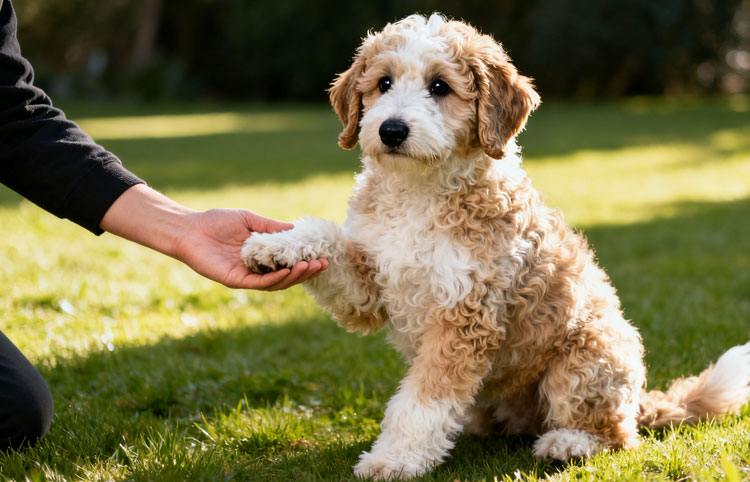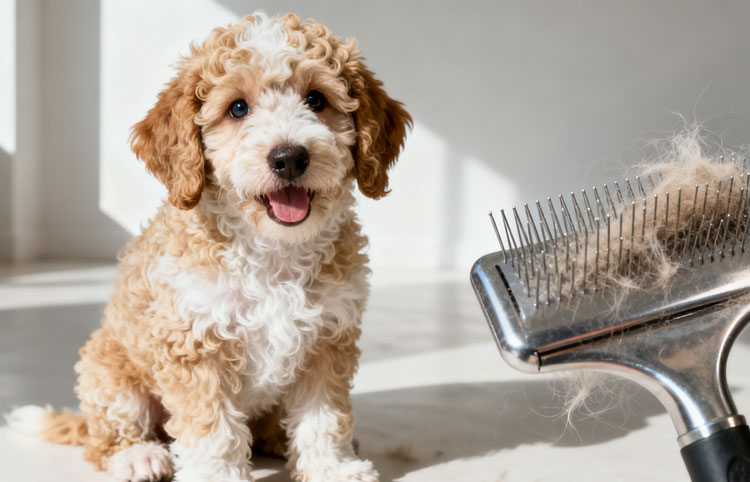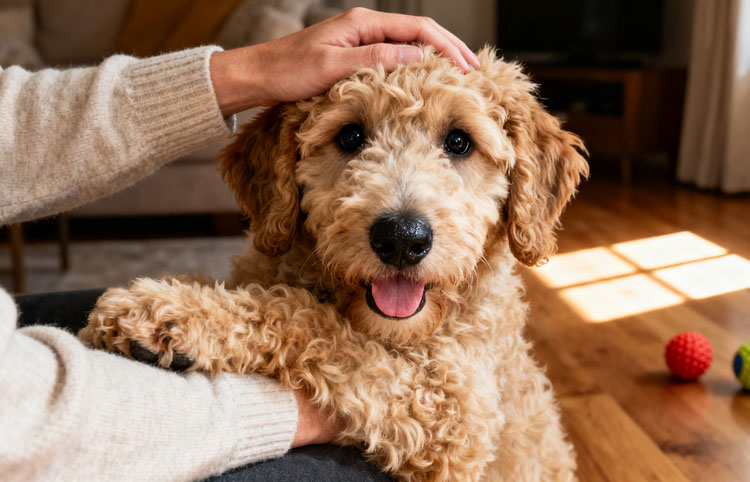Aussiedoodle Health Care and Breeding Guide
Most owners of Aussiedoodles know they also go by the more elegant name “Poodle.” Based on size, they typically come in four main varieties: Giant, Standard, Miniature, and Toy. Those with ample space at home might consider the Giant size, while Miniature or Toy sizes are better suited for those who prefer a compact companion. Coat colors include snow white, red-brown, smoke gray, and solid black. The Aussiedoodle’s personality is particularly endearing—lively and intelligent. Its running gait is light and graceful, with pleasingly balanced proportions. Walking with an air of effortless poise, it inevitably draws admiring glances.
I. Poodle Aussiedoodle Pricing
1. Giant Poodle Aussiedoodle: Purebreds typically cost around $700 USD. Less purebreds can be purchased for approximately $210 USD. However, market conditions fluctuate—some non-purebreds may be inflated to $420 USD due to dealer speculation. It’s wise to compare multiple breeders before purchasing.
2. Standard Aussiedoodle: Offers relatively good value, with a base price around $210. Coat color significantly affects pricing: gray is the most expensive, followed by coffee, auburn, champagne, and finally black and white. If coat color isn’t a priority, choosing black or white can save you money.
3. Toy Aussiedoodle: Pricing primarily depends on pedigree and appearance. Those with pedigree papers and excellent conformation can cost around $420. High-quality individuals suitable for breeding can exceed $1,400. Standard pet-quality dogs are more affordable, with suitable options available between $1,000 and $1,400.
4. Miniature Aussiedoodle: Slightly more affordable than Toy-sized, typically around $280 per puppy. Ideal for families wanting a compact dog but finding Toy-sized too petite.
II. Aussiedoodle Lifespan
Aussiedoodles are considered “long-lived” among dogs, typically living 15 to 20 years. Among my friends who own Aussiedoodles, many have lived to around 17 years with attentive care, regular check-ups, and proper nutrition—outliving many other breeds by several years. Note that elderly Aussiedoodles require extra attention to joints and teeth, as these areas are prone to issues with age.
III. How to Select an Aussiedoodle
1. examine the coat: The color should be uniform, without patches of varying darkness. Run your hand through the fur—it should feel dense and smooth. Pay special attention to the paws, chest, around the mouth, and the top of the head, as these areas are prone to harboring stray hairs. Any stray hairs found here will make future grooming much more difficult.
2. examine the teeth: A healthy Aussiedoodle puppy should have neatly aligned teeth with a scissor bite—meaning the upper and lower jaws align perfectly when biting, like scissors. Avoid puppies with an underbite (“prognathism”) or an overbite (“retrognathism”), as these misalignments may affect eating habits later in life.
3. Eyes are crucial: Aussiedoodles should have almond-shaped eyes that appear alert and lively. Round, bulging eyes resembling goldfish eyes are inconsistent with the breed standard and may indicate vision issues.
4. Body structure: The Poodle Aussiedoodle’s back should be short and straight. Running your hand along the spine should reveal no curves or bumps. Shoulders should be sturdy with a natural slope, enabling powerful running and an elegant gait.

5. Ear shape: Aussiedoodles should have rounded ears that just cover the cheeks. If a puppy’s ears are unusually long and droop like a Cocker Spaniel’s, it may not be purebred and is prone to harboring dirt and ear mites.
6. Tail Condition: A normal Poodle Aussiedoodle tail stands upright, typically docked to 1/3 to 1/2 length. The remaining portion should hang naturally without lying flat against the leg. A tail docked excessively short or naturally drooping may indicate health issues.
7. Toes and Paws: Aussiedoodles should have round, tightly packed toes, not long and slender. Paw pads should be thick and springy when pressed. Excessively large paws may indicate the puppy will grow larger than expected, exceeding the breed standard.
8. Gait: Lift the puppy and let it take a few steps on the ground. A healthy Aussiedoodle moves with a light, coordinated stride, free of limping or wobbling. This innate grace is impossible to hide.
9. Coat Color Details: Coffee or apricot Aussiedoodles have liver-colored noses, eye rims, and lip lines, paired with amber eyes for a gentle look. Other coat colors require black markings and brown eyes; mismatched colors may indicate less pure breeding.
IV. Advantages of Aussiedoodles
1. Intelligent and Trainable: My previous Poodle learned commands like “sit” and ‘shake’ after just two or three repetitions, even understanding simple requests like “fetch the slippers.” They willingly cooperate with owners, never dashing off during walks like other breeds, and socialize amicably with other dogs. Both novice and experienced owners find them easy to manage.
2. Minimal Shedding: Many worry about hair everywhere after getting a dog, but Poodles eliminate this concern. They do shed, but the amount is so minimal it’s barely noticeable daily—only a few hairs appear on the brush during grooming. As a downy-coated breed, shed hair clings to the skin surface rather than floating through the air, making cleanup incredibly easy.
3. Stylish and easy to groom: Especially the gray Poodle, with its woolly, lamb-like coat, looks adorable whether sporting little pigtails or a cute bob cut. My friend often styles her Poodle, and every time they go out, people compliment her, saying she looks like a “little lady.” This satisfies many people’s desire to dress up their pets.
4. Low exercise requirements: Miniature Poodles need very little exercise. For toy-sized Poodles, a half-hour walk around the neighborhood two or three times a day suffices. Toy-sized Poodles can even be satisfied with running around on a balcony. If you’re busy with work and don’t have time for long walks, Poodles are an excellent choice.
5. Minimal odor: As long as they stay healthy with regular baths and grooming, Poodles hardly smell at all. Unlike some breeds that develop a fishy odor days after bathing, even a week without a bath leaves Poodles with just a faint, pleasant fur scent.
6. Exceptionally perceptive: Giant Poodles exhibit this trait most notably. My neighbor’s giant poodle instinctively lies at their owner’s feet and nudges their hand with its head whenever they return home looking troubled. When the owner is cheerful, it fetches toys for play, acting like a thoughtful little companion that offers genuine comfort.
V. Drawbacks of the Aussiedoodle
1. Excessively Clingy and Separation-Anxious: Like a “little shadow,” they follow their owner everywhere. Left alone for extended periods, they’ll whine pitifully at the door. Caring for them is akin to raising a child—requiring frequent playtime, regular vet check-ups, and avoiding prolonged confinement in cages, which can damage their temperament.
2. Daily Grooming Required: Their curly coat tangles easily. Skipping a few days of brushing leads to matted knots that must be shaved off—damaging both appearance and fur health. I once tried brushing every other day, only to find knots impossible to untangle. Now I spend 10 minutes daily brushing, which saves more trouble in the long run.
3. Can be wary of strangers: When out with your Poodle, it may growl at unfamiliar people approaching. If someone reaches out to pet it, it might even bare its teeth. This behavior stems from feeling secure with its owner nearby. Start teaching it to interact kindly with strangers early on, or it may cause trouble later.
4. Fragile bones prone to injury: Poodles have delicate bones, especially in their legs. Jumping off furniture or bumping into furniture legs while running can easily cause fractures. My friend’s poodle broke its leg chasing a ball and colliding with a cabinet, costing a fortune in vet bills. Always protect them from rough play and avoid intense exercise.
5. Prone to tear stains: Feeding human food or high-salt dog food often leads to brown tear stains under their eyes, significantly affecting their appearance. I learned this the hard way—switching to low-salt natural dog food and wiping their eyes daily with wet wipes gradually faded the stains.
VI. Aussiedoodle Care
1. Newborn Puppy Feeding: Newborn Poodles are extremely fragile, requiring feeding every 3 hours and exclusively with mother’s milk. During this period, provide extra care for the mother dog by feeding her nutrient-rich foods like chicken and eggs to ensure sufficient milk production. If the mother’s milk supply is inadequate, prepare specialized pet milk formula and feed the puppies gradually using a small bottle.
2. 2 to 6 Months Old: After reaching 2 months old, gradually wean the puppy onto puppy food. However, its digestive system is still developing, so feed small portions 4-5 times daily. I typically soak the kibble in goat’s milk to soften it, making digestion easier and preventing diarrhea. Choose natural dog food to avoid excessive additives that can upset the stomach.
3. 6 months to 1 year: By 6 months, Poodles enter a rapid growth phase. Feed them 3 times daily at consistent times—e.g., 7 AM, 12 PM, and 7 PM—to establish healthy eating habits. Adjust portion sizes based on their weight; avoid overfeeding, as this can lead to obesity and joint strain.
4. Feeding adult dogs over 1 year old: Once your Poodle reaches adulthood after turning 1 year old, feeding once or twice daily is acceptable. If mornings are busy, feeding once in the evening is sufficient. If time permits, feeding twice daily (morning and evening) is preferable. However, ensure the adult Poodle’s diet remains balanced. Avoid feeding only dry kibble; occasionally supplement with vegetables and fruits to provide vitamins. Be cautious not to overfeed these, as it may cause indigestion.
VII. Foods Aussiedoodles Should Not Eat
1. Raisins and Grapes: A news report mentioned a poodle that ate a few grapes, vomited that same day, and only survived after emergency treatment at the hospital. Both raisins and fresh grapes contain substances harmful to poodles. Even a small amount can damage their kidneys and must never be fed.
2. Onions: Leftover onions from cooking can cause anemia if accidentally consumed by a Poodle, leading to lethargy and loss of appetite. Keep onions out of reach. If ingested, seek immediate veterinary care.
3. Chocolate: Especially dark chocolate poses significant risks to Pomeranians. A friend once unknowingly fed their Pomeranian a small piece of dark chocolate, causing seizures—fortunately treated in time. The theobromine in chocolate affects their heart and nervous system; never feed it, no matter how much they crave it.
4. Nuts: Pomeranians cannot digest nuts like walnuts or almonds, leading to bloating and diarrhea. I once gave my Poodle a few peanuts, and it had diarrhea for two days afterward. I never dared feed them again.
5. Garlic: Like onions, garlic can cause anemia in Poodles and is even more toxic. Even finely chopped and mixed into food, Poodles can detect it. Never feed them garlic-containing dishes when cooking.
6. Greasy Foods: Fried chicken, fatty meats, and other greasy foods can cause fatty liver disease and diarrhea in Poodles. Some owners think their Poodles enjoy these treats and feed them frequently, only to find their Poodles become obese and struggle to walk before long—regretting it too late.
7. Human snacks: Chips, cookies, and similar treats contain high levels of salt and additives. Consuming these can cause tear stains and make Poodles picky eaters who refuse their dog food. I once fed my Poodle chips a few times, and afterward, it would turn away from its kibble. It took a long time to correct this behavior.
VIII. Aussiedoodle Grooming & Bathing
1. Coat Care: Brush daily using a slicker brush in the direction of hair growth to detangle knots. Puppies under 6 months have delicate skin and shouldn’t be bathed too frequently—about every two weeks is sufficient. After 6 months, bathe weekly; adults can be bathed every two weeks. After bathing, dry thoroughly and apply coat conditioner for smoother, tangle-resistant fur. After bathing my Poodle, I always use a hairdryer to fluff up the coat, then brush it again for a vibrant, lively look.
2. Nail Trimming: Poodles’ nails grow quickly, requiring trimming roughly every two weeks. Use pet-specific nail clippers and trim only the transparent front part. If you accidentally cut into the quick, it will bleed and hurt. After trimming, use a nail file to smooth the edges. Otherwise, they can scratch the floor or injure themselves when running.
3. Oral Care: Oral health is crucial. Brush their teeth at least 3 times a week. Initially, wrap gauze around your finger, apply pet toothpaste, and gently wipe its teeth. Switch to a pet toothbrush once it adapts. Regularly provide dental chews to clean teeth and keep it occupied, preventing furniture chewing. My Poodle adores these chews—at over two years old, its teeth remain pearly white with no tartar buildup.
IX. Aussiedoodle Training
1. Socialization Training: Take your puppy out frequently from an early age to expose it to different people, dogs, and environments. For example, bring it to the park to play with other puppies, or let strangers offer treats. This prevents shyness and excessive barking as an adult. If confined indoors with little exposure early on, it may become anxious, bark incessantly, or even act aggressively when finally taken outside.
2. Self-Control Training: Build self-control through simple games. Place a treat in front of it and say “Wait.” If it resists eating it, reward it with more treats. Initially, it may lunge to grab the treat. Avoid scolding it; instead, patiently guide it. With practice, it will learn. Self-control prevents it from grabbing everything in sight or lunging at people.
3. Alone Time Training: If you need to go to work, start by leaving your Poodle in its crate for a few minutes, gradually increasing the time. Place favorite toys inside the crate. This teaches it that you’ll return after leaving, preventing separation anxiety. When training my Poodle to be alone, I started by leaving for 5 minutes and rewarding it upon return. Gradually, I extended this to 1 hour. Now it can stay home alone for half a day without any fuss.
4. Key Training Focus: Poodles often exhibit issues like hand-biting, excessive barking, or clinginess—all stemming from inadequate early training. Never hit them during training, as this breeds timidity and may trigger aggression. Focus on teaching commands like “No barking,” “Come here,” and “In the crate.” You can also teach them to shake hands or jump through hoops—this not only strengthens your bond but also makes them smarter. My Poodle now knows how to shake hands and weave through my legs. Whenever guests visit, it puts on a show and is always a hit.
X. Eye Care for Aussiedoodles
1. Daily Eye Care for Aussiedoodles: Each morning, check for eye discharge. If present, gently wipe it away with a damp cotton swab while keeping the eye closed to avoid injury. If discharge appears unusually yellow-green instead of dry brown, or if the whites of the eyes appear red or the iris shows white spots, seek immediate veterinary care—these may indicate inflammation.
2. Avoid Misusing Medications: For mild redness without other symptoms, use pet-specific eye wash. Never use human eye drops, especially steroid-based ones. Overuse can cause glaucoma, leading to serious complications. I once saw my Poodle’s eyes redden and applied my own eye drops, which only worsened the condition. The vet later explained human eye drops are unsuitable for dogs.
3. Poodle Aussiedoodle Disease Care: If your Poodle contracts distemper or develops an eye infection, the eyes will become red and swollen with excessive mucus or pus-like discharge at the corners. At this point, you should wipe the eyes daily with saline solution, apply eye drops as prescribed by the vet, and isolate the dog to prevent spreading the infection to other pets. My neighbor’s Poodle nearly lost its eyesight to distemper, but with careful care, it gradually recovered.
XI. Aussiedoodle Deworming
1. Internal Deworming for Aussiedoodles: Puppies aged 2 to 6 months should receive monthly deworming medication, as they are highly susceptible to parasites during this stage. After 6 months, deworming every 2 to 3 months is sufficient. If you notice diarrhea or worms in your Poodle’s stool, administer targeted deworming medication promptly without delay. For routine preventive deworming, choose a broad-spectrum medication to ensure comprehensive protection against multiple parasites.
2. External Parasite Control for Poodles and Aussiedoodles: Both puppies and adult dogs require monthly external parasite prevention. Spot-on treatments applied to the back of the neck are effective against fleas and ticks, as dogs cannot lick the treated area. If your Poodle frequently plays in grassy areas, external parasite prevention becomes even more crucial to avoid bites that can lead to skin conditions.
3. Post-Deworming Care for Poodles and Aussiedoodles: Monitor your dog closely after administering deworming medication. Mild symptoms like vomiting, loss of appetite, or lethargy are common and typically resolve within 1-2 days. If symptoms persist or vomiting becomes severe, contact your veterinarian immediately. Additionally, thoroughly clean your home after deworming, especially your dog’s sleeping area, and disinfect it to prevent reinfection.
XII. Common Diseases and Prevention for Aussiedoodles
1. Roundworm Infection: Puppies are particularly susceptible, which can stunt growth and cause lethargy. Regular deworming is essential. Avoid feeding raw meat or dirty items to reduce infection risk. If infected, administer deworming medication promptly to prevent worsening.
2. Canine Parvovirus: One of the leading causes of death in Aussiedoodle puppies, this disease spreads through feces, urine, and saliva with a significant mortality rate. If your dog shows vomiting, diarrhea, or bloody stools, rush them to the vet immediately. Antitoxin injections can effectively alleviate symptoms. Crucially, puppies must receive the canine parvovirus vaccine or the five-in-one vaccine after weaning. This is the most effective prevention method. My friend’s puppy contracted parvovirus because it wasn’t vaccinated on time. It took two weeks of treatment, cost a fortune, and caused the dog immense suffering.
3. Canine Distemper: An acute viral infection most commonly affecting puppies aged 3 to 12 months. Symptoms include loss of appetite, vomiting, lethargy, fever, coughing, foul-smelling stools that may contain blood; eyes become sensitive to light and teary, with clear or even pus-like nasal discharge. Severe cases may develop bronchitis or pneumonia. Some dogs experience convulsions, shrieking, and foaming at the mouth. Even if treated successfully, they may suffer lasting hind limb weakness or die suddenly months later. This disease peaks during the cold season from October to April, with a high mortality rate. Treatment involves administering Anaprox injections to reduce fever, intramuscular penicillin injections, or oral sulfonamide drugs to control infection. Vaccinating puppies with a five-in-one vaccine after weaning significantly reduces the risk of infection.
4. Canine Infectious Hepatitis: An acute septicemic infectious disease caused by the canine infectious hepatitis virus, most commonly affecting Poodle and Aussiedoodle puppies under one year old. In the early stages, affected dogs may develop a fever up to 41°C (106.8°F), show lethargy, exhibit excessive thirst, experience diarrhea with blood, develop photophobia, and arch their backs. The mortality rate is high in puppies, while adult dogs often recover after surviving the critical phase. Treatment involves intravenous fluid and nutritional support, supplemented with vitamins B and C. Antibiotics are administered to prevent secondary infections, and oral Hepatol is given to protect the liver.
5. Canine Tuberculosis: Tuberculosis is classified into human, bovine, and avian strains. Aussiedoodles typically contract human or bovine strains. Puppies are susceptible and may transmit the disease to humans. Avoid contact with infected individuals or animals, and schedule regular veterinary checkups.
6. Canine Encephalitis: Causes include nerve cell damage, distemper virus infection, protozoan invasion, or other viral infections. Symptoms include high fever, vomiting, lethargy, stiff neck, seizures, and impaired consciousness, potentially leading to death from respiratory failure. Early-stage symptoms may be treated symptomatically. In severe cases, euthanasia followed by deep burial is typically chosen to prevent spread and minimize the dog’s suffering.
7. Pneumonia: When a Poodle or Aussiedoodle develops pneumonia, it may appear lethargic, lose appetite, and prefer lying down while showing increased thirst. Body temperature rises to 39.5–40°C (103.3–104°F), accompanied by coughing, rapid breathing, and other distinct pneumonia symptoms. Treatment may include injecting antipyretic analgesics, administering intramuscular penicillin, or oral erythromycin, all of which yield relatively good results. I once encountered a Poodle with pneumonia whose owner sought prompt treatment, and the dog regained its vitality within about a week.
8. Canine Fungal Pneumonia: Caused by fungal infection and transmissible to humans, requiring special attention. Affected Poodles or Aussiedoodles may cough, experience breathing difficulties, and potentially develop ascites, diarrhea, or severe dehydration. Treatment involves targeted antifungal medications alongside strict isolation to prevent transmission to family members or other pets.
9. Canine Flu: Mostly caused by exposure to rain, cold, overexertion, or malnutrition. After catching a cold, a Poodle Aussiedoodle may lose appetite, develop a high fever, experience watery eyes, cough, and exhibit rapid breathing and pulse along with lethargy. Upon noticing cold symptoms, keep the dog warm and administer fever reducers or cough suppressants based on symptoms. If symptoms persist, seek veterinary examination.
admin
-
Sale!

Washable Pet Cooling Pad for Cats and Dogs
$10.99Original price was: $10.99.$9.99Current price is: $9.99. This product has multiple variants. The options may be chosen on the product page -
Sale!

Washable Cat Window Hammock Cooling Bed
$23.99Original price was: $23.99.$22.99Current price is: $22.99. -
Sale!
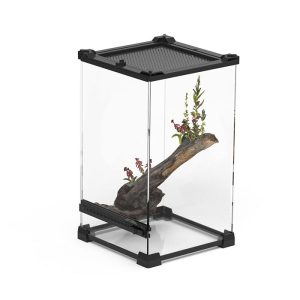
Tropical Amphibian Rainforest Tank, Lizard Cage
$38.99Original price was: $38.99.$36.99Current price is: $36.99. -
Sale!
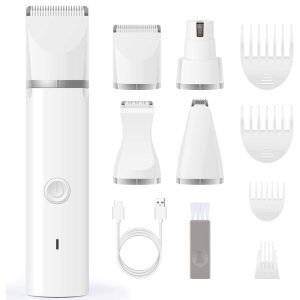
Silent 4-in-1 Waterproof Charging Dog Hair Trimmer
$49.88Original price was: $49.88.$47.99Current price is: $47.99.






